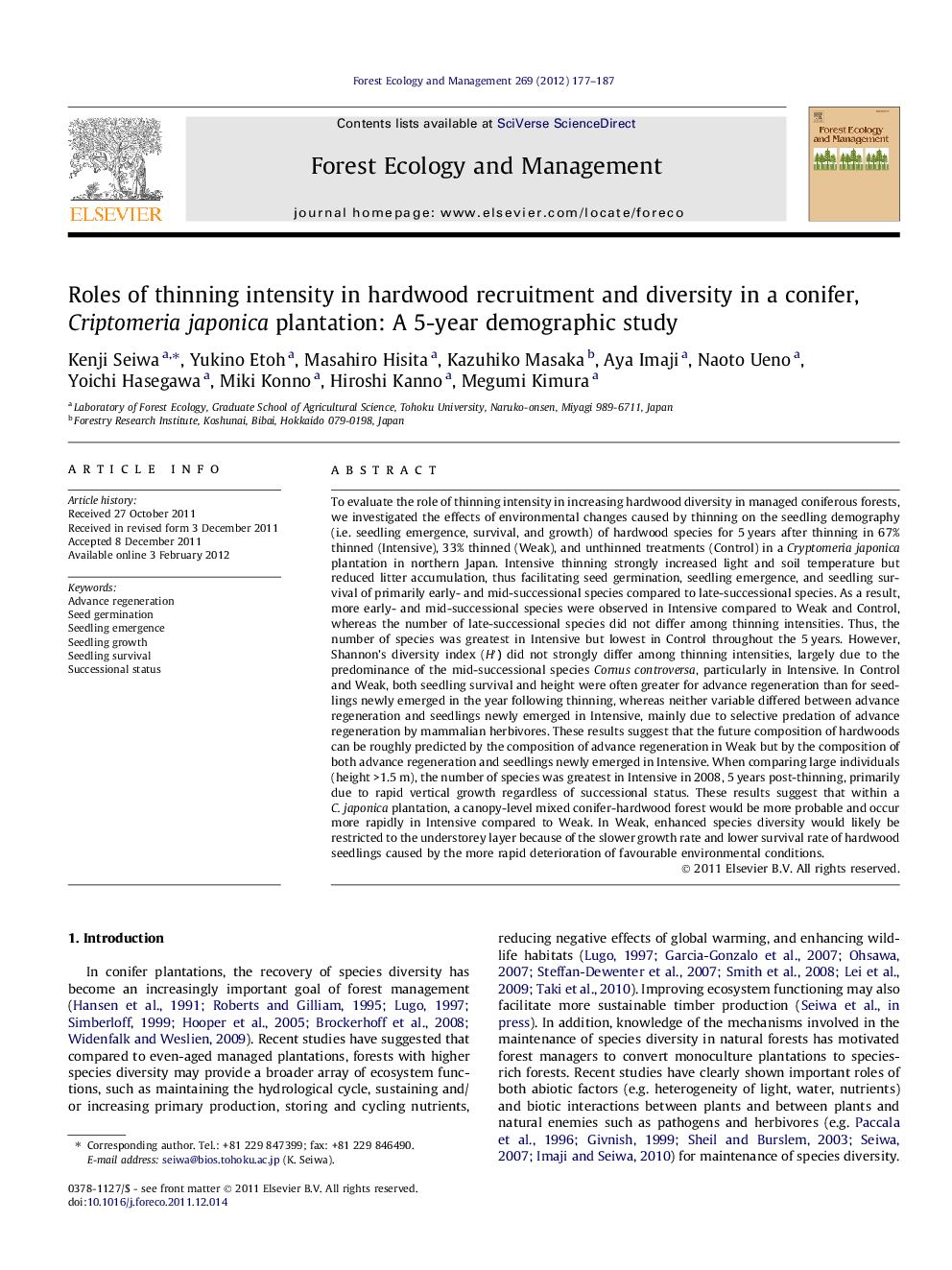| کد مقاله | کد نشریه | سال انتشار | مقاله انگلیسی | نسخه تمام متن |
|---|---|---|---|---|
| 87454 | 159251 | 2012 | 11 صفحه PDF | دانلود رایگان |

To evaluate the role of thinning intensity in increasing hardwood diversity in managed coniferous forests, we investigated the effects of environmental changes caused by thinning on the seedling demography (i.e. seedling emergence, survival, and growth) of hardwood species for 5 years after thinning in 67% thinned (Intensive), 33% thinned (Weak), and unthinned treatments (Control) in a Cryptomeria japonica plantation in northern Japan. Intensive thinning strongly increased light and soil temperature but reduced litter accumulation, thus facilitating seed germination, seedling emergence, and seedling survival of primarily early- and mid-successional species compared to late-successional species. As a result, more early- and mid-successional species were observed in Intensive compared to Weak and Control, whereas the number of late-successional species did not differ among thinning intensities. Thus, the number of species was greatest in Intensive but lowest in Control throughout the 5 years. However, Shannon’s diversity index (H′) did not strongly differ among thinning intensities, largely due to the predominance of the mid-successional species Cornus controversa, particularly in Intensive. In Control and Weak, both seedling survival and height were often greater for advance regeneration than for seedlings newly emerged in the year following thinning, whereas neither variable differed between advance regeneration and seedlings newly emerged in Intensive, mainly due to selective predation of advance regeneration by mammalian herbivores. These results suggest that the future composition of hardwoods can be roughly predicted by the composition of advance regeneration in Weak but by the composition of both advance regeneration and seedlings newly emerged in Intensive. When comparing large individuals (height >1.5 m), the number of species was greatest in Intensive in 2008, 5 years post-thinning, primarily due to rapid vertical growth regardless of successional status. These results suggest that within a C. japonica plantation, a canopy-level mixed conifer-hardwood forest would be more probable and occur more rapidly in Intensive compared to Weak. In Weak, enhanced species diversity would likely be restricted to the understorey layer because of the slower growth rate and lower survival rate of hardwood seedlings caused by the more rapid deterioration of favourable environmental conditions.
► We evaluated the role of thinning intensity in species diversity in a conifer plantation.
► Intensive thinning (67%) strongly increases environmental conditions.
► Environmental improvement facilitates establishment of pioneer species.
► More early- and mid-successional species are observed in Intensive thinning.
► Number of species is greatest in Intensive but lowest in Control.
Journal: Forest Ecology and Management - Volume 269, 1 April 2012, Pages 177–187